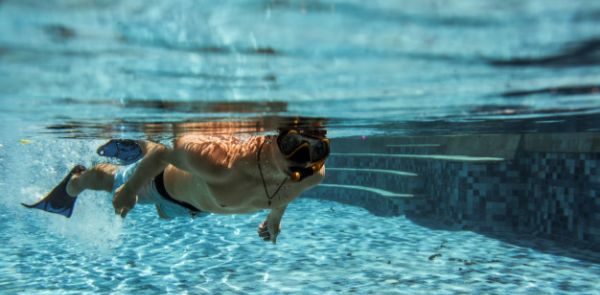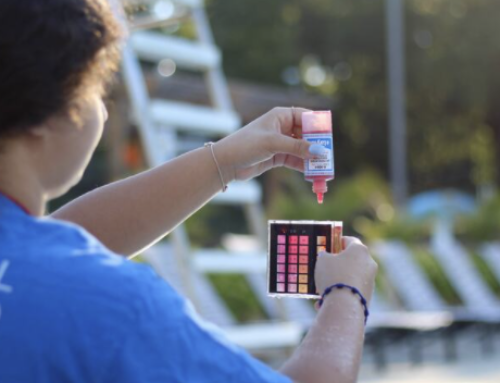May is National Water Safety Month! It’s time to focus on best water safety practices, and determine what we can do to ensure guests’ safety while in the pool. According to the World Health Organization, drowning is the 3rd leading cause of unintentional deaths. The first step to improving this statistic is to become educated about the problem. It’s essential that anyone involved in the management of aquatic facilities be knowledgeable about drowning facts and work to dispel drowning myths among patrons. Although certified lifeguards have had training in drowning recognition, it’s important that pool managers and other pool staff involved in operations are educated as well. The ability to identify a swimmer in distress can help to avoid tragedy.
Facts vs. Myths
Often times, in the media we see drowning portrayed as a loud, dramatic cry for help with lots of violent splashing. However, true episodes of drowning are quite the opposite.
Myth: Drowners Will Yell for Help
Drowning happens silently and subtly. If someone is unable to breathe, they are also unable to yell or even speak. Therefore, speech is physically impossible during a drowning. Instead of screaming or crying for help, the swimmer may be gasping for air or hyperventilating. However, gasping and hyperventilating is only possible if they are even able to keep their head above the surface of the water.
Myth: Drowners Will Splash Violently
Film and television misleads you believe that drowners exhibit wild splashing behaviors. This is another falsity. Instead, drowners instinctively try to push themselves up to the surface. Instead of reaching up and splashing, they press down on the water in an effort to keep their mouths above the water to breathe.
Myth: Drowning Takes Awhile to Occur
Another myth is that drowning can take awhile. Drowners may only actually have seconds before they slip under the water. People who begin drowning are typically only able to struggle for 20-60 seconds before the become fully submerged in the water.
Media portrayals of drownings are frequently inaccurate. Lifeguards can help in preventing fatal drownings, but it’s important that other pool staff and guests also understand common signs of drowning.
Common Signs of Drowning
Drowning looks different than the way many people imagine it. This is why it’s important for your pool staff to be able to recognize true signs and indicators of potential drownings. There are multiple ways to tell when someone may be in trouble. Common signs of a potential drowning are:
- Silence: Drowners are physically unable to speak because they can’t breathe. Instead of yelling for help, drowners may begin gasping and hyperventilating.
- Vertical Position in Water: If someone is in a vertical position in the water, but isn’t moving their legs, they may be in trouble.
- Head Low in Water/Tilted Back: While in the vertical position, it is instinctual for drowners to tilt their heads back, trying to keep their mouth above water. The swimmer’s head will be tilted back with their mouth wide open at water level.
- Floating Face Down: Face-down floating for extended periods of time is most often not purposeful. Take action immediately if someone is in this position.
- Arms Moving Downward: Drowners try to push themselves back to the surface of the water. If you see a swimmer’s arms moving downward, they may be trying to push from something that isn’t there. Imagine pushing up off a desk as you stand up from a chair. This is a similar concept. This may also look like trying to climb and invisible ladder.
- Bobbing Up and Down: If someone is moving in the water or appears as if they’re trying to swim, but aren’t making progress, they may be drowning.
Drowning is a serious matter, but there are steps that your facility can take to help prevent it. Firstly, educate all staff at your aquatic facility on signs of drowning. Drowning happens quickly and silently, so it’s best to have all staff aware of what a drowning episode looks like. This way, a rescue can be executed more quickly. It’s also important to hire a great team of qualified lifeguards. American Pool offers top lifeguarding services. If your facility is still looking for the right lifeguards, learn more about our pool management services here.





